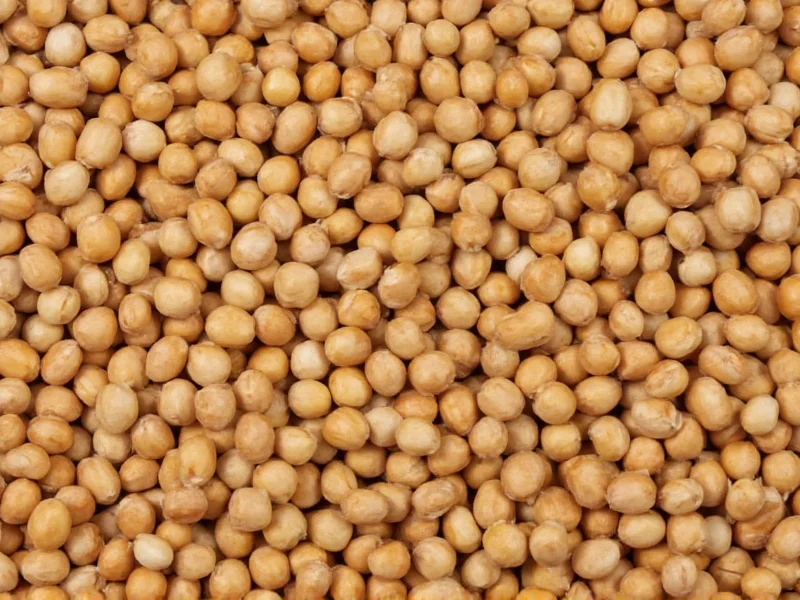Lentils represent one of the oldest cultivated crops in human history, with archaeological evidence dating back to 8000 BCE in Turkey. These small, disc-shaped legumes belong to the Fabaceae family but differ significantly from true beans in structure, cooking properties, and nutritional profile. Understanding what is a lentil bean requires recognizing that while commonly grouped with beans in culinary contexts, lentils are botanically distinct.
Botanical Classification and Physical Characteristics
Lentils (Lens culinaris) are annual plants producing small seeds ranging from 3-8mm in diameter. Their distinctive lens-like shape gives them their name—"lens" in Latin refers to the optical lens due to this characteristic shape. Each lentil pod typically contains two seeds, unlike bean pods which often contain multiple seeds.
The confusion between lentils and beans stems from their shared classification within the legume family, but they belong to different genera. Beans primarily come from the Phaseolus genus (like kidney beans) or Vigna genus (like black-eyed peas), while lentils have their own genus—Lens. This botanical distinction affects their cooking behavior, nutritional composition, and agricultural requirements.
Major Lentil Varieties and Their Uses
| Variety | Color/Appearance | Cooking Time | Best Culinary Uses |
|---|---|---|---|
| Brown/Green | Olive green to brown | 20-30 minutes | Soups, stews, Indian dals |
| Red/Yellow | Orange to yellow | 15-20 minutes | Curry dishes, purees, quick-cooking recipes |
| French Green (Puy) | Speckled blue-green | 25-30 minutes | Cold salads, gourmet dishes |
| Black (Beluga) | Small, shiny black | 25-30 minutes | Caviar substitute, elegant salads |
Nutritional Powerhouse: Why Lentils Stand Out
When examining what is a lentil bean from a nutritional perspective, lentils offer remarkable benefits. A single cup of cooked lentils provides approximately 18 grams of protein, 15 grams of fiber, and significant amounts of iron, folate, and manganese. Their low glycemic index makes them ideal for blood sugar management, while their high fiber content supports digestive health.
The difference between lentils and beans becomes particularly evident in their nutritional profiles. Lentils generally contain more folate and iron than most beans, while beans typically have slightly higher protein content. Lentils also boast a more complete amino acid profile when compared to many bean varieties, making them an excellent plant-based protein source.
Culinary Applications and Preparation
Understanding how to cook lentils properly reveals another key distinction from beans. Unlike most beans that require soaking to reduce cooking time and improve digestibility, lentils cook relatively quickly without pre-soaking. This makes them exceptionally convenient for weeknight meals. Cooking times vary by variety, with red lentils breaking down into a creamy consistency ideal for soups, while French green lentils maintain their shape for salads.
Professional chefs appreciate lentils for their versatility across global cuisines. In Indian cooking, lentils form the basis of dals; in Middle Eastern cuisine, they feature in mujadara (lentil and rice pilaf); and in European traditions, they appear in hearty stews. The question of are lentils considered a bean often arises in culinary discussions, but their unique properties make them valuable in their own right.
Agricultural Significance and Sustainability
Lentils play a crucial role in sustainable agriculture due to their nitrogen-fixing properties. As legumes, they form symbiotic relationships with soil bacteria that convert atmospheric nitrogen into a form plants can use, reducing the need for synthetic fertilizers. This makes lentil cultivation particularly valuable in crop rotation systems, improving soil health for subsequent crops.
Globally, Canada, India, and Australia lead in lentil production, with Canada dominating the export market. Lentils thrive in cooler climates with well-drained soils, making them suitable for regions where other crops might struggle. Their relatively low water requirements compared to many protein sources positions lentils as a climate-resilient crop for future food security.
Storage and Preparation Best Practices
Proper storage maintains lentil quality for up to one year. Keep dried lentils in airtight containers in a cool, dark place away from moisture. Before cooking, rinse lentils thoroughly to remove any debris or dust. Unlike beans, most lentil varieties don't require soaking, though sorting through them to remove small stones remains important.
For optimal digestion, consider adding kombu seaweed during cooking or using the quick-soak method (brief boil followed by 1-hour soak) for those with sensitive digestive systems. The cooking time for different lentils varies significantly—from 15 minutes for red lentils to 30 minutes for heartier varieties—so understanding these differences prevents undercooking or mushiness.
Health Benefits Backed by Research
Regular consumption of lentils correlates with numerous health benefits. Studies show lentil consumption helps reduce LDL cholesterol levels, lowers blood pressure, and improves glycemic control in diabetics. Their high fiber content promotes satiety, making them valuable for weight management. The lentil health benefits extend to cardiovascular protection, with research indicating regular legume consumption reduces heart disease risk by up to 22%.
For vegetarians and vegans, lentils serve as a crucial protein source, especially when combined with grains to form complete proteins. The iron in lentils, while non-heme (plant-based), becomes more bioavailable when consumed with vitamin C-rich foods like tomatoes or citrus—making lentil soup with tomatoes particularly nutritious.











 浙公网安备
33010002000092号
浙公网安备
33010002000092号 浙B2-20120091-4
浙B2-20120091-4